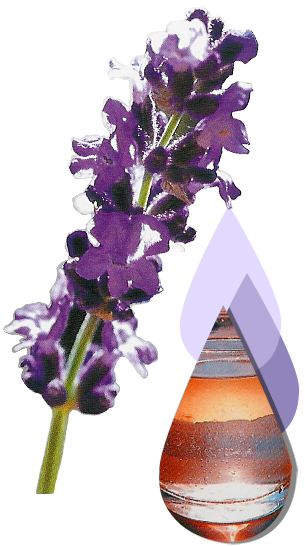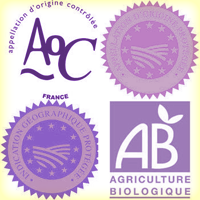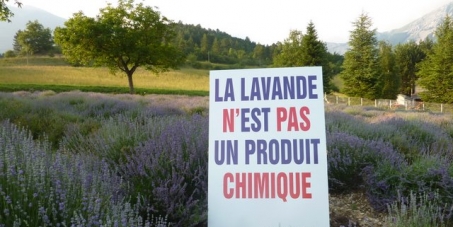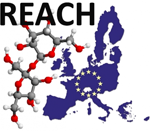REACH rulings
CRIEPPAM
Note on the current situation concerning the new rules on essential oils
Summary:
The numerous legislative rulings on essential oils are not adapted to the product, which they consider as a chemical composite.
The consequence of such ruling is the banning of essential oils from many manufactured goods, replaced by synthetic chemical products. Paradoxically, consumers are requesting more and more natural products.
The REACH program :
(Recording Evaluation Authorisation of CHemical products).
The REACH ruling has a noble aim: to protect European consumers from all the potentially dangerous chemical products around.
Recent debates, about “Bisphenol A” and other chemical products surrounding us in our everyday life, have reminded us of the importance of being aware of the danger of chemical components.
The REACH program then asks for the creation of a form for each chemical product, produced or imported, in the European Union – a sort of approval certificate, whose accuracy and price would be proportionate to the quantity produced by year and by producer.
This is why there are different tonnage levels: exemption under 1T/year, then levels 1/10T; 10/100T; 100/1000T; >1000T. The more the production weighs, the more the form will weigh, and the registration time will be shortened.
This approval certificate is composed of three sections:
- physico-chemical data (density, viscosity…);
- toxicological data (lethal dose, irritation, reactions…);
- and ecotoxicological data (lethal dose on fish, biodegradability…)
Natural products are normally excluded from the REACH program, unless they are classified as dangerous substances - which is the case of many essential oils. Indeed, most of them can at the very least be irritating for the eyes, or catch fire, which is apparently enough to deny them the fact that they are natural, and transform them into chemical products. Petroleum, for example, is completely exempted...
This first mistake is at the basis of situations which have not been answered. No matter how we look at the thing, and how long, essential oils will not fit the box chemistry had intended.
Admitting the fact that a form needs to be filed for essential oils, as for other chemical products, many embarrassing questions rise:
- who is the producer (for REACH, he is the one responsible for the file),
- and how is essential oil going to be defined ?
To the first question, industry and administration have answered on our behalf, saying that the distiller is the producer.
And there lies a second fundamental mistake, stemming from the first one: the distiller extracts the essential oil from the plant, but it is the plant which, thanks to biosynthesis, produces the oil.
The second question is: how can we define an essential oil, and how will representative samples be selected?
Contrary to chemical products, each plant produces a different essential oil, and Nature has seen to it that there are more than 600 different components in an essential oil. Each component can be found in variable quantities, and a dozen of those components constitute 90% of the product for a given essential oil.
For many years now, important chemists of the perfume industry have tried to solve this problem, but have never found a satisfying answer.
In 2012, FranceAgriMer launched a study, conducted by INERIS (National Institute of the Industrial Environment and potential Dangers), to examine these tricky questions.
The proposition that came out is to assimilate essential oils to a chemical mixture composed of its main different components.
To the question of representative samples, they suggest selecting samples in which all the dangerous chemical components would be present, at their maximum rate - which is another aberration, since this is asking Nature to produce a sample totalizing 140%. Or it would be simpler – even if this has not been said clearly – to produce a chemical mixture, using isolated synthetic products.
The question of the definition of essential oil remains then unanswered, and we can say that a form based on a given sample will be easily questionable, because the product will certainly be different from the selected sample, proportionately enough to merit debate.
Exotoxicity is yet another aberration. .
First of all, we are asked to measure the exotoxicity, the bioaccumulation and the persistence of products that have been found in nature for thousands of years.
If these persisted, wouldn’t they be found in rivers and groundwater tables?
Evolution has taught us that Nature knows how to dispose of the organic products she creates.
Moreover, to make things even simpler, essential oils can’t be dissolved in water. Yet, to conform to the tests, scientists need to have access to a given dose of oil, dissolved in a given dose of water.
Ecotoxical chemists thus decided to add solvents to the oil, so that it can be dissolved, and its effects on fish analyzed. This is what has been done to essential oil of orange, without success.
Next obstacle: the concentration of each component of an essential oil has to remain the same throughout the test, but of course, each component has its own solubility and degradation rate.
To state things plainly, the exotoxicological evaluation is useless, and there is no existing method adapted to essential oils.Yet, no adjustments are possible, or have even been proposed.
Allergens:
There is an already existing ruling on allergens which forces producers to put a label on products considered as allergens.
To go further, the European Scientific Council, alarmed by the gravity and frequency of allergies, suggested adding more than 100 products to the allergens lists, which has gone from 26 to 130. The council also suggested transforming the labeling limit into a restricting limit.
Using lavender as perfume would thus become forbidden, which would certainly condemn many famous perfumers.
This suggestion is highly contested by the industry, and even if in the near future the law were to be dropped, the proposition would crop up again.
The final view established by the SCCP (Scientific Committee of Consumption Products) on October 2012 is upsetting. On page 256, quoted results of tests on hybrid lavender are largely negative; but this does not prevent scientists from coming to the conclusion that, taking into account the fact that hybrid lavender essential oil contains allergen substances; hybrid lavender should be classified as an allergen. Once more, this particular case shows how essential oils differ from their chemical components. Moreover, the credibility and integrity of a Scientific Committee which takes so many shortcuts is highly debatable.
Labeling:
The repulsive effect of suggested pictograms is not the only problem due to labeling.
First, there are inconsistencies. When a product is “bio”, it is classified as an alimentary product, and from then on, this i the only way it can be referred to. The same product – such as lavender, for example – used differently should be classified as “lethal in case of ingestion”.
Has lavender become a poison?
Moreover, it is forbidden, nowadays, to talk about therapeutic virtues of essential oils, even though they have been used in such ways for decades. How can the transmission of ancestral uses and popular knowledge be forbidden? Are we on our way towards a new kind of inquisition?
The multi-use notion is denied by the ruling, and a single use has to be chosen for the product; the only application of the product the consumer is supposed to respect. But lavender essential oil is known to have numerous possible uses.
Other rulings :
Essential oils are affected by many other rules, which were not made for natural products and which raise many questions of the same order:
- CLP rules,
- alimentary,
- medication,
- rules on biocide...
The arguments requesting a different treatment for plants, their extracts and their use:
Essential oils are not chemical products, even if they can be used as raw materials in industry. Essential oil has to be considered a whole, and evaluated as a whole.
There are numerous proofs, provided by well-known tests, that the properties of an essential oil are different from the sum of the properties of its components. Essential oil cannot thus be evaluated by a software; this is only a dream allowing scientists to tick boxes and limit spending.
The price of a form is disproportionate, compared to the surface of a distillery, and the REACH program provides that states should ensure that small organizations are not penalized, when it comes to money.
The form demands the constitution of patents on living entities, which is contrary to international conventions. Only those in possession of a form will be able to commercialize essential oils, when such oils are natural products, from nature, which cannot be patented.
In correspondence we received from Senator Duffaut in 2007, we were informed that the European Agency ECHA had been forced to come to the producers, with concrete proposals, giving special instructions, concerning the registration of natural products. This commitment has not been respected.
Possible propositions:
First of all, producers are not opposed to the evaluation of essential oils, but they want methods adapted to natural products, taking into account the particularities of nature and living natural entities; thus with means compatible with their own activity.
Nature is not compatible with boxes you tick, for the sake of European rules.
The problem should not be transferred to the industry: the danger would be even greater, because if the forms are not filled in, the products would be directly discarded.
A specific status should be adopted for plants, extracts and their uses.
These goods have been recognized for ever, we cannot allow them to disappear, nor can we tolerate that they be privatized. They are part of a collective heritage, a universal one. In all cases, this is an agricultural product which we must defend. So why don’t we go further and ask for the acknowledgement of such plants, extracts and their uses in the immaterial cultural heritage of UNESCO?
Read the complete file : dossier-reach.pdf
















